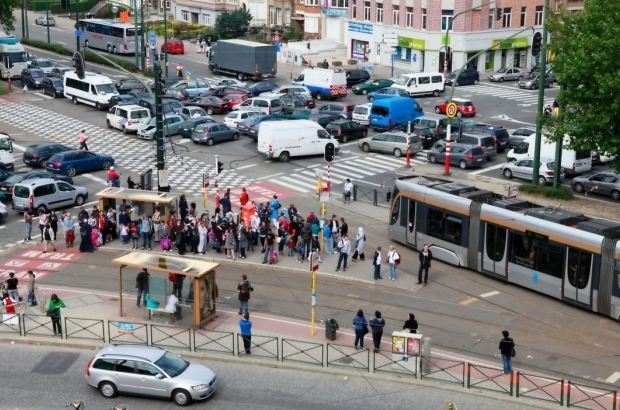- Daily & Weekly newsletters
- Buy & download The Bulletin
- Comment on our articles
Amid rise in traffic-related injuries, Brussels aims for some 'quick wins'
Having already reached a record of 3,556 people injured in traffic in the first nine months this year, the Brussels region is hoping to secure some "quick wins" with relatively straightforward road safety improvements.
Mobility minister Elke Van den Brandt plans to tackle 30 of the most troublesome areas and reduce speeds on 16 streets, Bruzz reports.
“It is a dark year for road safety in Brussels,” Van den Brandt said in response to the recent sharp rise in traffic-related injuries.
The minister has always made reducing accidents and improving road safety part of her platform, and many initiatives of the capital’s Good Move mobility plan intend to work towards the aim.
But for faster results at the most dangerous intersections - those that see more than 10 accidents per year - that still do not yet have major works planned, Van den Brandt is hoping some quick fixes will help.
“To avoid these spots remaining unaddressed for years, we analysed how to greatly improve road safety with quick wins and micro-projects,” Van den Brandt said.
These micro-projects importantly would not require excessive permits or paperworks or be subject to the same level of public scrutiny as larger overhauls of traffic patterns.
They include, for example, better adjustment of traffic lights and the placement of physical objects that separate cycle paths from the part of the road occupied by cars.
Larger projects are intended to follow in the future, aimed at more structural improvements, but for now the aim is to curb sharply rising accident figures.
“Meiser is a good example of this,” Van den Brandt said, referring to Place Général Meiser in Schaerbeek. While new, temporary road markings and concrete blocks have been placed to improve safety, she said a thorough reconstruction is overdue.
“We did not wait there to intervene because the total reconstruction of that intersection takes time,” said Van den Brandt.
Spokesperson Pieterjan Desmet explained that other interventions are intended to be more permanent, such as ones made at Place Dailly in Schaerbeek: “There it involved removing a lane and putting bollards in its place. In each case, the focus is: significantly increase road safety in the short term.”
A list of 30 dangerous intersections was first drawn up back in 2015, and nearly all have since been addressed.
“Research confirms that road safety has improved significantly at 21 of those spots,” said Van den Brandt. “In the past two years, fewer than 10 accidents occurred in those places.”
The remaining eight spots did not yet receive an evaluation because the modifications there happened less than a year ago, and more data is needed.
Porte de Flandre is the only one on the 2015 list to have not yet been addressed, which is why it is included once more on the newest list.
“Porte de Flandre is a tangle of regional and municipal roads,” Van den Brandt explained.
“So we need an agreement between the different administrations involved. There are a number of proposals on the table, but for the time being we are not managing to convince the municipal council of Molenbeek-Saint-Jean. Without their consent, we cannot make any relevant improvements.”
Other interventions are planned from 2023 onwards, and some include intersections that had already seen improvements made in previous years, for example Porte de Namur.
“These reappear on the list because a new problem has surfaced,” Desmet said. “So the type of accident is different, or the exact location at the intersection is different.”
In terms of quick fixes, that means municipal roads are not included, as these require the sort of complicated agreements Porte de Flandre needs. Only regional roads are being tackled for temporary safety improvements.
The region is however asking municipalities to address dangerous points on municipal roads and even offering them support in doing so.
As an additional measure, 13 streets will be made into Zone 30 ones, meaning the top speed will be 30 kph.
In three other streets, the speed will be reduced from 70 to 50 kph.


















